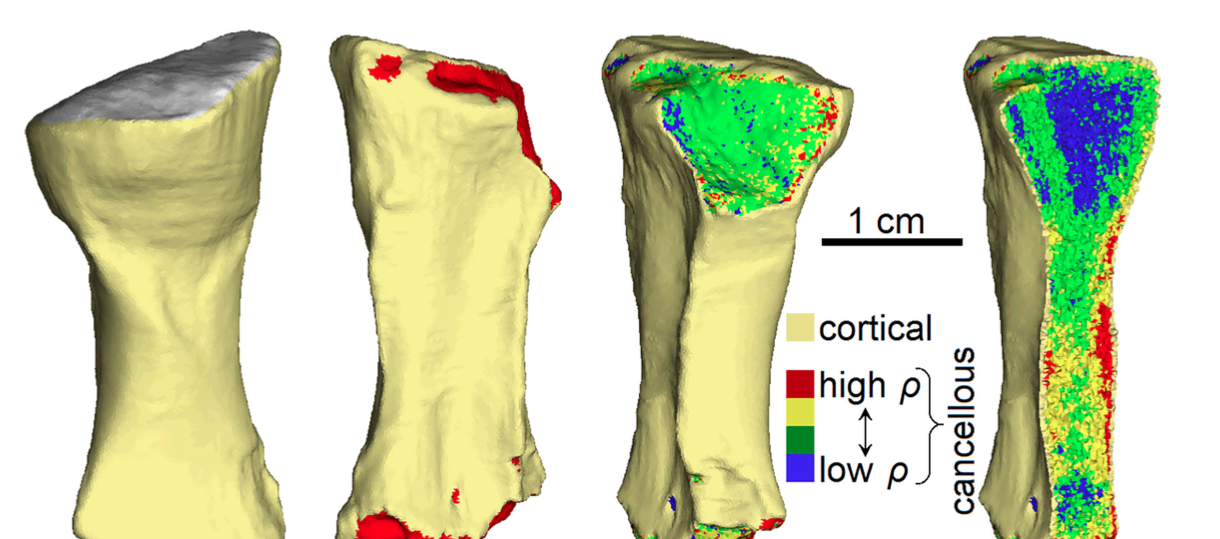New Scientist
Image: 2015 Bishop et al.
It was one small fall for a tetrapod, but it signals one giant leap for tetrapod kind. A broken leg bone pushes back the emergence of our four-legged ancestors from water on to land by at least 2 million years.
A gap in the tetrapod fossil record means we know little about what happened between the time when limbs evolved from fish fins some 360 million years ago and the first land-adapted tetrapods appeared 330 million years ago.
To find out, Peter Bishop at the Queensland Museum in Hendra, Australia, and his colleagues analysed a rare tetrapod fossil from that gap, a 1.5-metre-long Ossinodus which lived some 333 million years ago in what is now Australia. They found that Ossinodus‘s forearm bones were strong enough to support the animal’s body on land.
It also has what Bishop believes is the world’s oldest known broken tetrapod bone. When the team used computer software to reconstruct the forces required to cause the break, they found the magnitude of the force was so large relative to the size of the animal that the accident must have occurred on land. Read more on newscientist.com…








